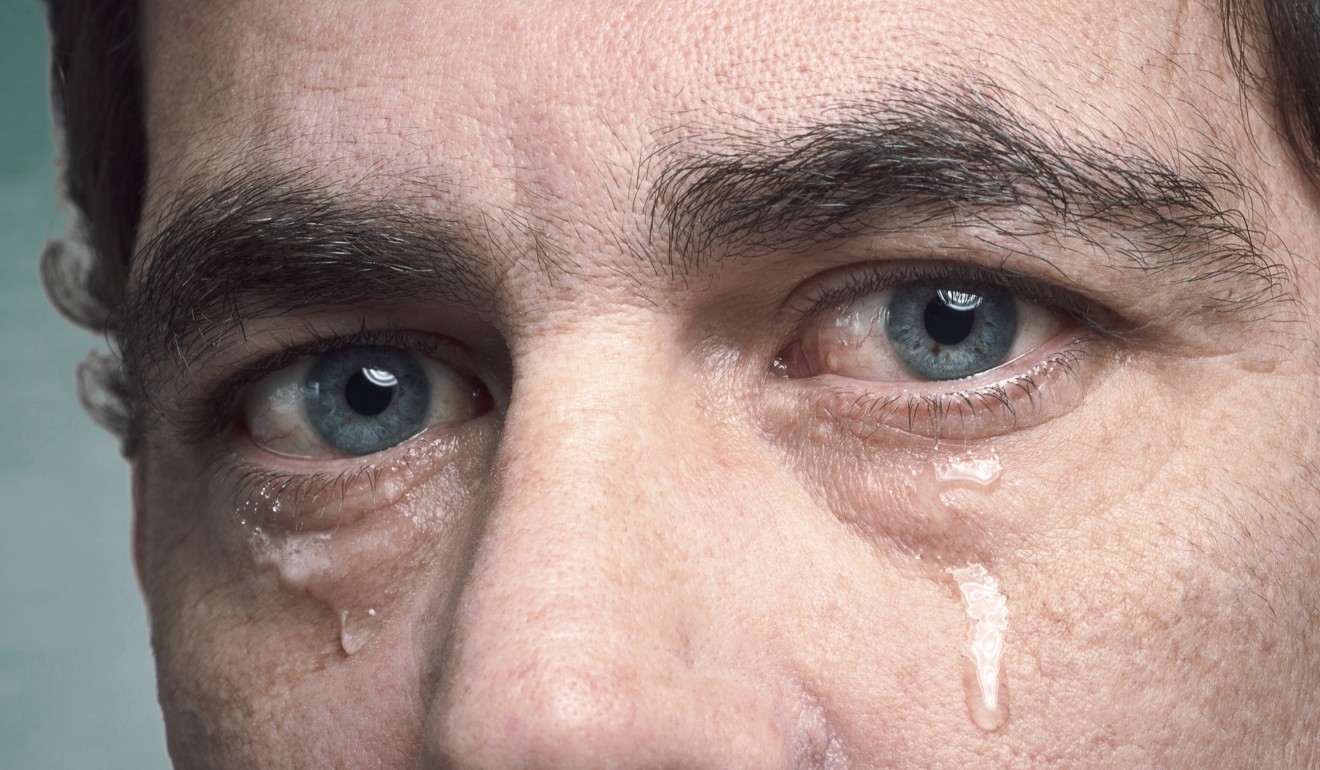
Why do we cry? Nine reasons why it’s healthy to shed a tear, and the science behind it
- Did you know humans are the only animals that cry? Or that several cities in Japan host ‘crying clubs’?
- Here are nine interesting facts about this vital human function
Some of us are criers. Some of us aren’t. I am, while my friend Cat isn’t. She has seen me weep dozens of times. I am not sure I have ever seen her cry. But that may be her loss.
Crying is usually a good thing (unless your newborn starts bawling at 2.45am), even if the emotion that precedes it isn’t. Crying isn’t a sign of weakness, it’s a human function with fascinating and necessary characteristics. Here are nine interesting facts about crying.
How I turned to AI so my baby could get a good night’s sleep
1. Only humans cry in response to emotional stress
So says neuroscientist and crying expert Dr William Frey II, founder and co-director of the Alzheimer’s Research Centre at Regions Hospital in St Paul, in the American state of Minnesota.

“Many other animals certainly have feelings, make crying sounds in response to pain and stress, and routinely have tears to keep their eyes moist, but they do not shed tears in response to emotional stress,” he says.
“Charles Darwin reported that emotional crying helps to relieve suffering but that the emotional tears were incidental and purposeless.”
It seems unlikely to the researcher, who has spent more than 20 years studying crying and tears, “that the evolution in humans of the ability to cry tears in response to emotional stress was purposeless”.

2. Crying is an intricate physiological response to an emotional stimulus
“When we receive sad news or otherwise experience an emotional event,” says Frey, “it triggers changes in the limbic system of the brain which then leads the brain to send signals to the tear glands – the lacrimal glands – which are located above and to the outside of the eyeballs.”
“These signals cause tears to be produced and released through our tear ducts. The tears spread across the eyeballs and then drain through the nasolacrimal ducts into the nasal passages which causes our nose to run. When an excess of emotional tears are produced the tears overflow our eyelids and run down our face.”
Sun Yang cries after fourth Asian Games gold and social media cries with him
3. Tears are more than salty water
This highly complex fluid contains almost 1,000 different constituents, including proteins (as many as 500 different ones), lipids, electrolytes, mucins, hormones and growth factors. Your body makes tears on demand at a rate of about one to three microlitres per minute, more when you’re weepy.
Tears come in three different types – basal tears that clean and lubricate our eyes through the day; reflex tears that happen when you’re chopping onions or reacting to an allergen like pollen; and emotional tears. Tears sweep your eyes clear of dirt and bacteria – like a mini sprinkler system.
In 2014, Japanese designer Keita Suzuki created the Tear Drop Chair, a free-form design filled with 64 litres of water, to represent the volume of tears a person sheds in their lifetime.

4. You feel better after crying
Because emotional tears help to remove chemicals that build up during stress, they are literally “crying it out”, says Frey. Emotional crying is an excretory process that helps remove harmful materials from the body. It is similar to how we exhale partly to remove carbon dioxide and we urinate to remove urea, he explains.
While this is only Frey’s theory, research does support it. Studies of different kinds of tears have found that emotional tears contain higher levels of stress hormones than lubricating or reflex tears. He says emotional tears also contain more mood-regulating manganese than the other types. Manganese is found in higher concentrations in tears than in blood serum. Elevated levels are usually associated with anxiety, irritability and aggression.

5. Crying helps the body to rid itself of stress.
“Unalleviated stress can cause an increase in the stress hormone cortisol and other stress-related chemicals,” says Frey, who published Crying: The Mystery of Tears in 1985 with co-author Muriel Langseth. “Cortisol is known to block the uptake of blood sugar [glucose] into the brain, and lack of glucose over time leads to starvation of brain cells in critical brain areas involved in memory and emotional response.”
He says sustained emotional stress can also cause constriction of the coronary artery that can increase the risk of heart attack. Crying lowers blood pressure and pulse rate. This is why Frey believes that the stress-busting value of human tears bears significant “survival value”.

6. Men cry less than women because of hormones
Testosterone is one thing that stops men crying as much as women, whereas all that oestrogen in women’s bodies coupled with higher prolactin levels (which helps women produce milk after childbirth) cause women to cry more because the protein prods the endocrine system (glands that produce and secrete hormones) – and that’s guaranteed to end in tears.
For an antidote to stress, sink into a Hong Kong gong bath (no water required)
7. Several cities in Japan host “crying clubs”, or rui-katsu
Entrepreneur and writer Hiroki Terai is the founder of this unusual service, in which people come together to watch a weepy film and indulge in a cathartic sobbing session. He was inspired to develop it when he realised divorced couples needed to “out” their emotion.
He augmented the service for divorced women, hiring handsome young men to wipe away their tears.
Terai has published 11 books – one, Ikemeso Danshi, features pictures of attractive men in tears.

8. Some people cry when they orgasm
Yes, good sex can make you sob. That may seem odd, but turning on the tear taps is the brain’s way of saying “Enough! Enough already!” No matter what it was – good or bad – tears suggest you’ve reached overload. People cry when they’re happy or sad. Tears then, concluded scientists at Yale, are a way for the body to restore emotional equilibrium.
Controversial adverts: sexism, racism and disrespecting chickens
9. People cry at the craziest stuff – even commercials
I cry more now than I used to. I feel tears pricking the backs of my eyes when I read a moving passage or watch a sad film.
There doesn’t seem to be an explanation why some people cry more as they age. Maybe it’s those raging hormones, coupled with a broader life experience that hones our empathy. And – of course – because those commercials are cleverly designed to manipulate.

